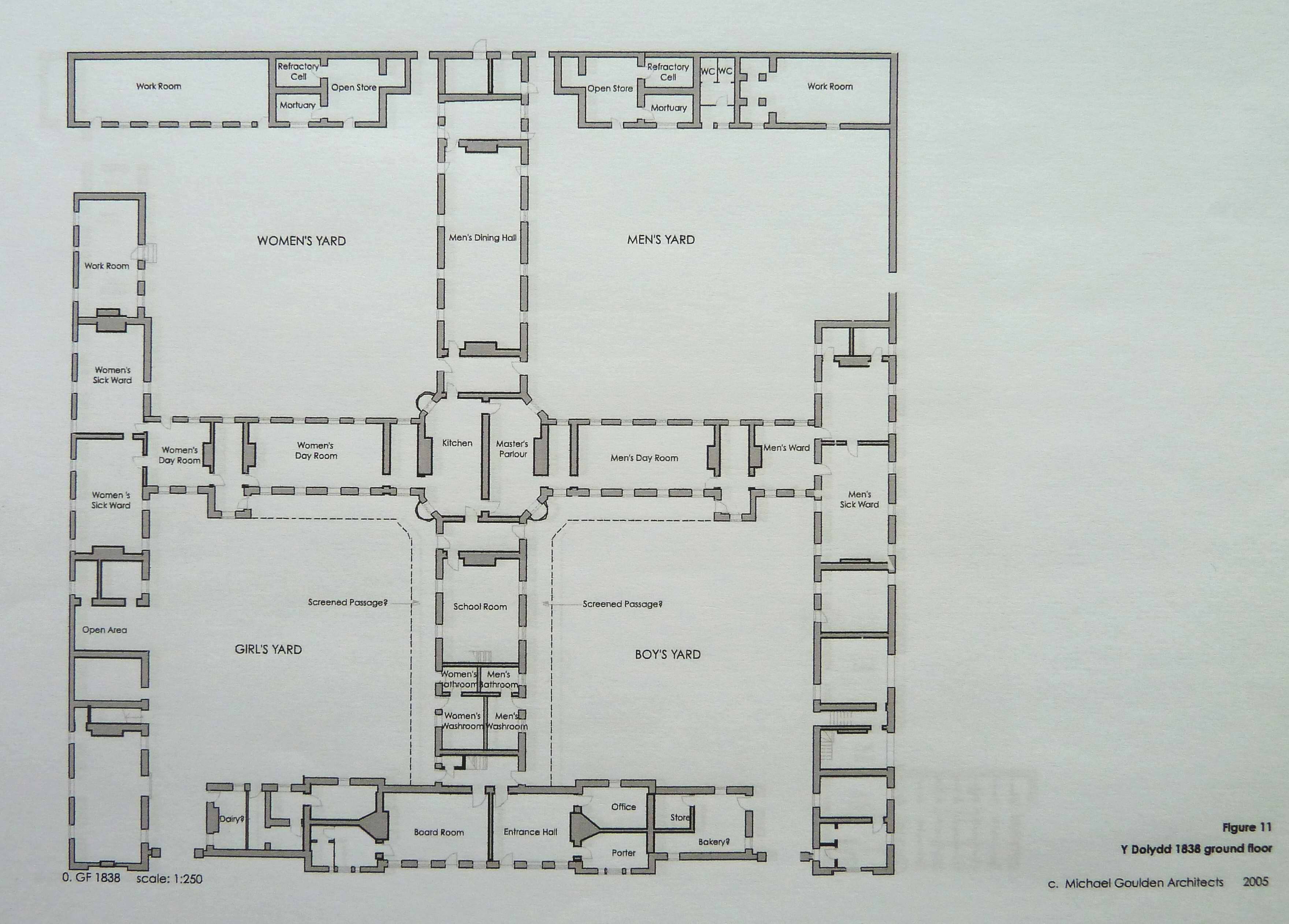Content can be downloaded for non-commercial purposes, such as for personal use or in educational resources.
For commercial purposes please contact the copyright holder directly.
Read more about the The Creative Archive Licence.
Description
The entrance is at the bottom of the plan. There are two doorways: inmates were admitted through the right hand door. Their details would be entered in the admissions register, kept in the master’s office off the entrance hall. The guardians, who governed the Union, met every fortnight in the Board Room next door: they had their own entrance.
Once admitted, couples or families were split up. Men and boys turned right: women and girls turned left. They would find themselves in a courtyard, with a tall fence preventing contact between the boys and girls. New inmates were taken into a room where they were given a compulsory bath and the workhouse uniform. Eventually they would be taken to their own sector of the building.
The women were housed in the wings extending to the left with the dormitories above. There was a day room which they could use when not at work. The sick wards, which housed the old and infirm, were also on the ground floor though there was a ‘lying-in’ or maternity ward on the first floor: many children were born here. Most of the rooms were long and narrow, with windows on each side to give good ventilation and an open fireplace at the end.
The men had similar accommodation on the right. In the 1880’s a single-storey wing was built extending towards the road to accommodate tramps, with working and sleeping cells: it was later demolished.
The children slept over their schoolroom, or on the first floor of the entrance block.
The Master and Matron and their family had quite spacious quarters at the centre of the building: they had easy access to each wing but men, women and children could not meet without passing through their house.
The dining room at the back was used by all the inmates but meal times could be staggered: it or the room above served as a chapel.
At the back were workshops as well as the ‘refractory wards’: small cells where inmates could be confined for misbehaviour.


Do you have information to add to this item? Please leave a comment
Comments (0)
You must be logged in to leave a comment